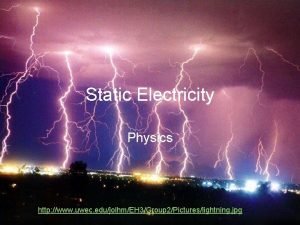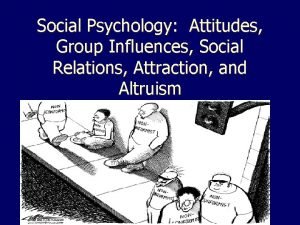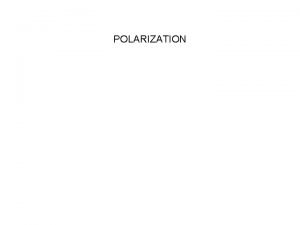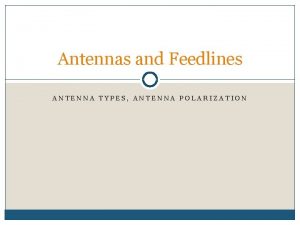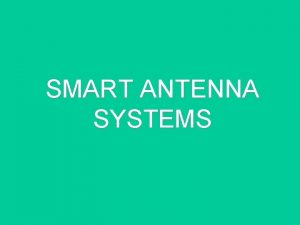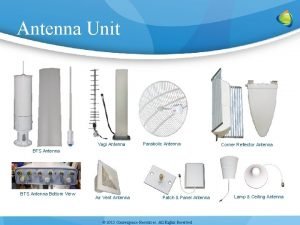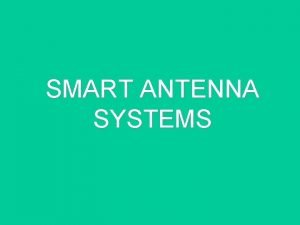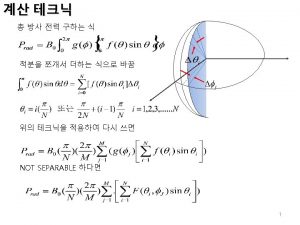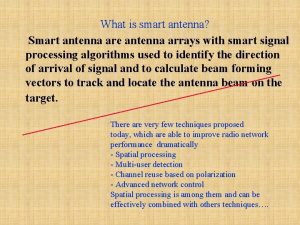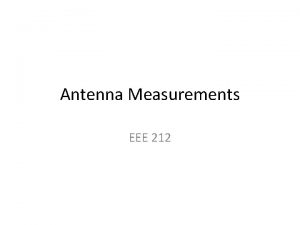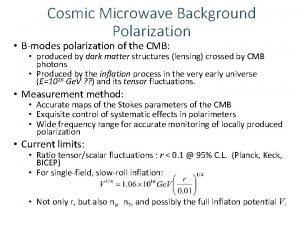Polarization Why do we care Antenna applications Antenna










- Slides: 10

Polarization: Why do we care? ? • Antenna applications – – Antenna can only TX or RX a polarization it is designed to support. Straight wires, square waveguides, and similar rectangular systems support linear waves (polarized in one direction, often) Round waveguides, helical or flat spiral antennas produce circular or elliptical waves. • Remote Sensing and Radar Applications – – Many targets will reflect or absorb EM waves differently for different polarizations. Using multiple polarizations can give different information and improve results. • Absorption applications – – Human body, for instance, will absorb waves with E oriented from head to toe better than side-to-side, esp. in grounded cases. Also, the frequency at which maximum absorption occurs is different for these two polarizations. This has ramifications in safety guidelines and studies. Cruz-Pol, ECE Dept. UPRM

Polarization • In general, plane wave has 2 components; in x & y • And y-component might be out of phase wrt to x-component, d is the phase difference between x and y. x Ex x y y Cruz-Pol, ECE Dept. UPRM Ey Front View

Several Cases • Linear polarization: d=dy-dx =0 o or ± 180 on • Circular polarization: dy-dx =± 90 o & Eox=Eoy • Elliptical polarization: dy-dx=± 90 o & Eox≠Eoy, or d=≠ 0 o or ≠ 180 on even if Eox=Eoy • Unpolarized- natural radiation Cruz-Pol, ECE Dept. UPRM

Linear polarization Front View • d =0 x Ex y Ey • @z=0 in time domain Back View: x y Cruz-Pol, ECE Dept. UPRM

Circular polarization • Both components have same amplitude Eox=Eoy, • d =d y-d x= -90 o = Right circular polarized (RCP) • d =+90 o = LCP Cruz-Pol, ECE Dept. UPRM

Elliptical polarization • X and Y components have different amplitudes Eox≠Eoy, and d =± 90 o • Or d ≠± 90 o and Eox=Eoy, Cruz-Pol, ECE Dept. UPRM

Parámetros de la elipse y Eyo a b o Cruz-Pol, ECE Dept. UPRM Eyo x

Polarization Loss Factor PLF Cruz-Pol, ECE Dept. UPRM

Poincaré Sphere • Plots any possible state of polarization Cruz-Pol, ECE Dept. UPRM

Cruz-Pol, ECE Dept. UPRM
 Why why why why
Why why why why Levels of care primary secondary tertiary quaternary
Levels of care primary secondary tertiary quaternary Don't ask why why why
Don't ask why why why Group polarization vs groupthink
Group polarization vs groupthink Deindividuation psychology definition
Deindividuation psychology definition Situational attribution
Situational attribution Charge polarization
Charge polarization Group polarization example
Group polarization example Groups tend to loaf less when
Groups tend to loaf less when Example of social psychology
Example of social psychology Groupthink vs group polarization
Groupthink vs group polarization






